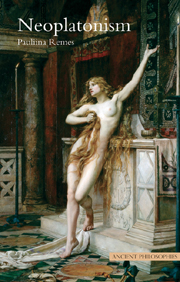Book contents
- Frontmatter
- Contents
- Preface
- Acknowledgements
- 1 Introduction
- 2 The first principles and the metaphysical hierarchy
- 3 Nature and the sensible universe
- 4 Human being and the self
- 5 Epistemology and philosophical psychology
- 6 Ethics and politics
- 7 The Neoplatonic legacy
- Glossary of terms
- Guide to further reading
- References
- Index of passages
- Index
2 - The first principles and the metaphysical hierarchy
- Frontmatter
- Contents
- Preface
- Acknowledgements
- 1 Introduction
- 2 The first principles and the metaphysical hierarchy
- 3 Nature and the sensible universe
- 4 Human being and the self
- 5 Epistemology and philosophical psychology
- 6 Ethics and politics
- 7 The Neoplatonic legacy
- Glossary of terms
- Guide to further reading
- References
- Index of passages
- Index
Summary
It has been claimed that there are two general approaches to metaphysics. One is to make an inventory of reality, that is, to find out what kinds of beings and classes of beings exist. Perhaps there exist, for instance, perceivable entities, recurring qualities, material physical particles or other elemental units and so on. The other approach is to inspect that which is basic and primary in reality, and that other existing things depend on (Moravcsik 1992: 56). Are perceptible entities basic or do they consist of more fundamental things, such as form and matter, or qualities, perhaps of some basic elements? What is the most basic thing in reality, and how do other things depend on it? Neoplatonism and this introduction to it include both approaches, while for the Neoplatonists the latter is the crucially more important. In their view, an inventory of existing things would be worthless without an account of the hierarchies and dependence relations the entities form and a view of what, ultimately, is fundamental in reality.
In their search for the fundamentally real, the Neoplatonists are guided by two preoccupations, both of which they inherit from foregoing ancient philosophy. One is the question of one versus many, the other that of constancy versus change.
One versus many
From its very start, ancient philosophy was preoccupied with the question of the relationship between simple and complex, unity and multiplicity.
- Type
- Chapter
- Information
- Neoplatonism , pp. 35 - 76Publisher: Acumen PublishingPrint publication year: 2008

